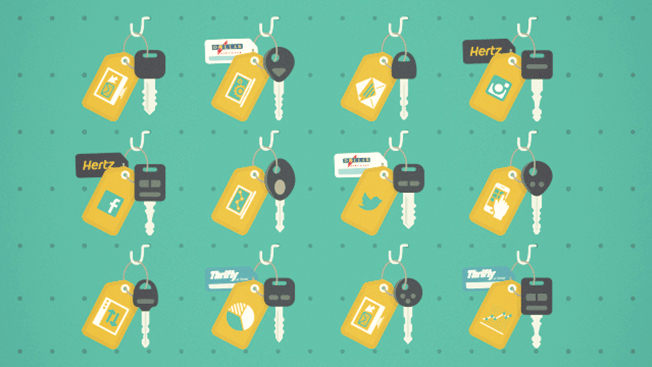Booking a flight or picking up a car isn’t what it used to be. With technology putting greater control in the hands of consumers, the travel industry has gone through significant disruption. Online travel agents such as Expedia and Kayak, car-sharing services and even taxi disruptors such as Uber and Lyft have upended how consumers plan their trips. Mobile, metasearch and peer-to-peer sites have shifted how they find out about offers and deals.
For a time-honored brand like Hertz, the competition for clicks is fierce. With dozens of deals filling inboxes daily, it’s harder than ever to get consumers’ attention. Fail to deliver on your brand promise, and you’re likely to end up in the trash instead of in the mix. The answer lies in providing information and offers that are customized to the user’s individual wants and delivering them at the moment the recipient is ready to read them.
The result? A personal relationship between Hertz and its customers that leads to improved satisfaction, enhanced loyalty and a stronger bottom line.
“The Internet changed the way people saw our products and how they were distributed,” says Charlie Coniglio, Hertz vp of CRM/online marketing, adding that the shift from desktop to smartphone is also changing how consumers are searching and booking. “You need to understand how they are consuming the emails, and [how they are] going from that email to our website.”
Hertz sees email as one of the most important methods for building its customer relationships. It is often the first place customers turn to get information about new services, find out about new destinations and learn about special deals.
Data analytics have given Hertz a clearer picture of how consumers engage with its offers. Coniglio started doing this at Dollar Thrifty Automotive Group (bought by Hertz in 2012), putting the Responsys campaign management solution in place in 2010. That strategy is now integrated into Hertz’s flagship programs. The goal: Use data to determine each consumer’s optimal offer, the optimal send time and the optimal format.
The data also allows Hertz to predict future engagement based on past consumer behavior. The objective is to deliver the right message and the right offer, knowing what consumers have engaged with previously. Poor performing offers are deactivated in real time to ensure customers who will open messages receive the most compelling content.
“If I do a big email to this group on a Sunday, we can understand what has performed best, what headlines have opened up so when we email those people on Thursday we have more relevant messaging,” he says. “By changing out headlines, changing out offers, we are able to optimize.”
The campaign optimization also includes automated retargeting that helps drive the purchase decision forward. Non-converters get an automated follow-up. Once a conversation is started, additional communications can be triggered to upsell and capitalize on the momentum of the first purchase. This benefits Hertz’s bottom line and also enhances the personal relationship the company is working to foster.
Next up: Send-time optimization, which will allow Hertz to profile the optimal times of the day and days of the week to reach individual customers. These timing analytics not only promise to improve behavioral metrics, but can also be used to trigger special offers related to what the consumer’s needs are most likely to be at that particular moment. They can also use search history and online behavior to help determine the context of offers.
Hertz’s strategy appears to be working. Coniglio says the average open rate for Hertz/Dollar/Thrifty is a strong 24 percent, while the average click-through rate is 3.3 percent. The firm has seen 20-35 percent revenue growth powered by the higher conversions from email analytics.
What’s more, Hertz has succeeded in driving traffic to its website for offer redemption, instead of having to incur the commissions from online travel agents and aggregators. So far in 2015, Hertz has received 5.9 million booked reservations on its flagship site, 1.3 million on Dollar and 1 million on Thrifty. Bringing the customer to its site allows Hertz to complement its customer-first communications strategy by changing landing page content, vehicle imagery and layouts to align with the offer calls-to-action to focus customer attention.
“The next evolution is people moving away from desktop to mobile devices,” says Coniglio. “We are working toward optimization based on the device you are looking at.” More personalization that ends up creating a better experience and deeper engagement.
* * * *
What does it take to create an iconic brand today?
That’s a question we’ve been asking here at Oracle. In today’s technology-driven world, it is a brand that understands the balance between art and science. It’s an appreciation that marketing isn’t simply the secret sauce of a few creatives, nor is it something that can be explained simply by crunching data and analyzing targets.

Iconic brands don’t choose sides in the art vs. science debate— they combine the forces of creativity and technology to serve the consumer in new and engaging ways.
Over the course of this series, we will be profiling brands that are marrying art and science, using Oracle Marketing Cloud and delivering engaging experiences that have a measurable impact on revenue.
Our first icon is Hertz, a brand that pioneered consumer loyalty programs and now—facing a new, less settled competitive landscape—sees new opportunities in providing personalized marketing. By using data-driven insights gleaned from Oracle Marketing Cloud, Hertz can treat each consumer as an individual and craft offers that cut through the noise because they are the most personally appropriate.
Hertz is using tools it has had in its marketing arsenal for years. But it is taking advantage of data-driven insights to give those tools new power and control. That’s what drives loyalty in today’s marketplace.








